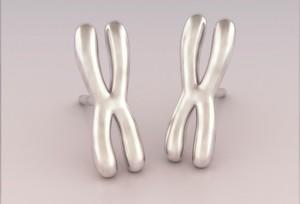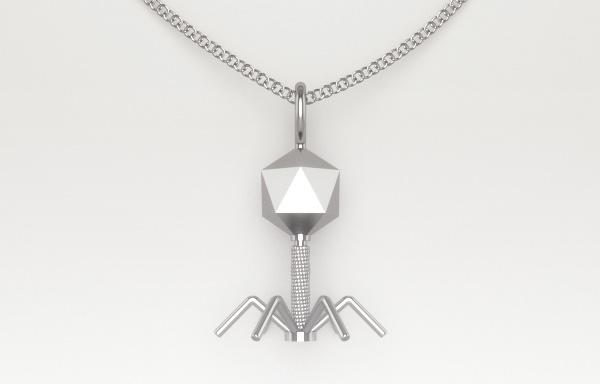
Now, a research scientist and a 3D artist and illustrator are pairing up to create jewelry designs that build upon their fascination with science and are helping them to invest in making science education more widely accessible. Idoya Lahortiga, the scientist and self-professed jill-of-all-trades, and designer Luk Cox, formerly a research scientist himself, have launched a jewelry line through Somersault18:24 with the idea that, “beautiful, smart, engaging, and sexy is not an impossible combination.”
This pair brings two PhDs in biomedical science and a creative vision that just won’t quit, to the creation of pendants and earrings in the images of phylogenetic trees, neurons, and pi among other designs. All of the jewelry is 3D printed in silver through Shapeways and the profits go to fund a platform that provides visuals to aid in science education.
“We firmly believe that science education and communication are crucial for the advancement of science. Tools and resources that facilitate this process should be as free as possible, easily accessible, and easy to share and spread. We know that this platform can only continue to exist, grow, and ultimately excel if you, the user, step up, support, honor, and trust the system. We’ve created these resources for everybody, regardless of your financial situation. If you can’t afford it, take it now. If you love it, chip in later when you can.”
Their most recent pair of releases are modeled by Idoya in a video on their site, a pair of chromosome earrings and a bacteriophage pendant. The chromosomes featured large in Idoya’s dissertation and she speaks of them with a fondness usually reserved for people’s conversations about a beloved pet. You might be surprised at the mechanical look of the bacteriophage, and that would be exactly what they are hoping for because chances are, after you see the necklace, you will not be able to resist learning more about these strange little creatures. Also part of the collection is a beautiful neuron pendants whose sensuous curves and asymmetrical form are captivating.
